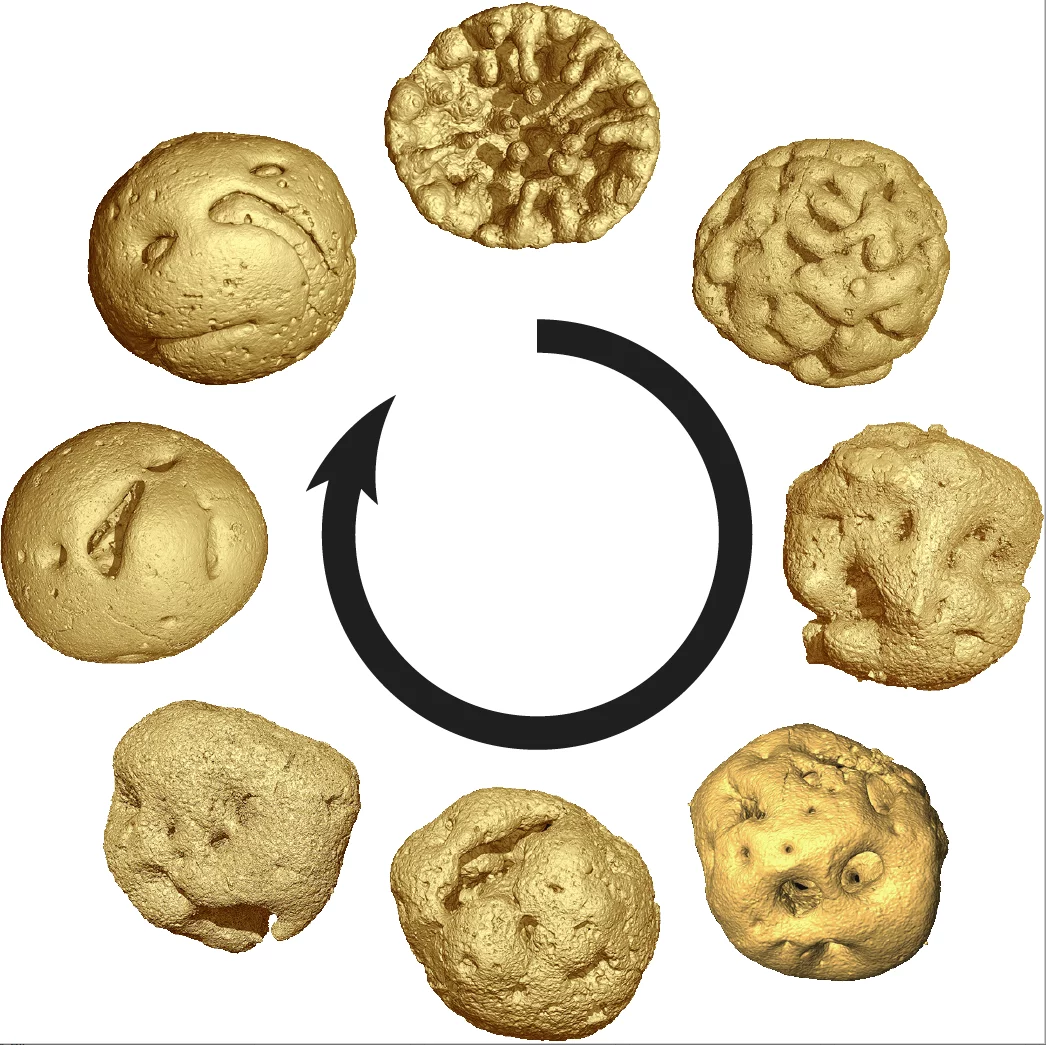Animals evolved from single-celled ancestors, before diversifying into 30 or 40 distinct anatomical designs. When and how animal ancestors made the transition from single-celled microbes to complex multicellular organisms has been the focus of intense debate.
An international team of researchers from the University of Bristol and Nanjing Institute of Geology and Palaeontology has found evidence that a key step in this major evolutionary transition occurred long before complex animals appear in the fossil record. The team discovered the fossils named Caveasphaera in 609 million-year old rocks in the Guizhou Province of South China. High-resolution synchrotron-based tomographic microscopy at TOMCAT of more than 200 of these exceptionally preserved half a millimeter-diameter fossils revealed that Caveasphaera sorted its cells during embryo development, in just the same way as living animals, including humans, even though no evidence that these embryos developed into more complex organisms has been found so far. Caveasphaera is the earliest evidence of the important step in the evolution of animals, which allowed them to develop distinct tissue layers and organs.
The results of this study have just been published in a new article in the journal Current Biology on November 27, 2019.
Original Publication
The Early Ediacaran Caveasphaera Foreshadows the Evolutionary Origin of Animal-like Embryology
Z. Yin, K. Vargas, J. Cunningham, S. Bengtson, M. Zhu, F. Marone, P. Donoghue
Current Biology 29, 1-8 (2019).
DOI: 10.1016/j.cub.2019.10.057
Press release
The University of Bristol Press Office has published a press release about this study.
Contact
Dr. Federica Marone
Beamline Scientist, Swiss Light Source
Paul Scherrer Institut
Telephone: +41 56 310 5318
E-mail: federica.marone@psi.ch
